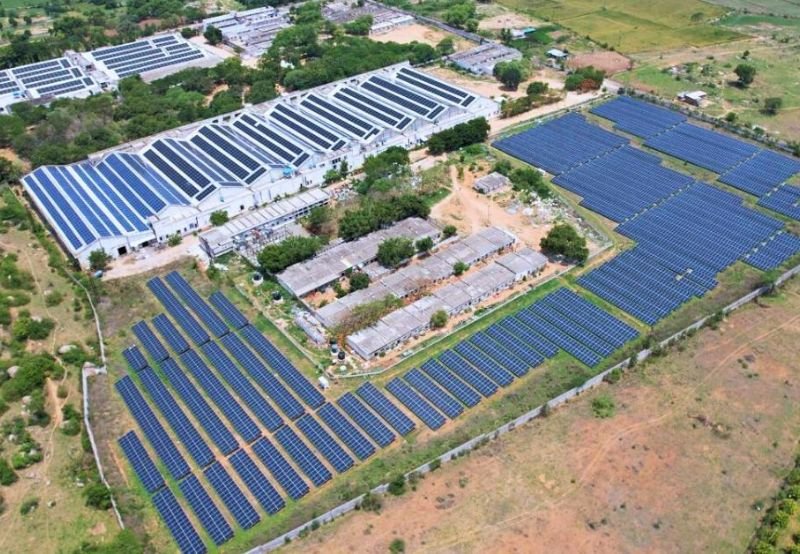Denim Giant Suryalakshmi Powers 100% Daytime Operations with Solar
Hyderabad’s Suryalakshmi Cotton Mills, a major player in the yarn and denim industry, has taken a giant leap toward sustainability. The company now meets all its daytime electricity needs through solar power, thanks to a 5.5 MW captive solar project. This includes a 3 MW ground-mounted system and a 2.5 MW rooftop installation, rolled out in phases. Let’s break down how this shift is reshaping their energy footprint—and what it means for the solar industry.
Why Solar for a Denim Factory?
Textile manufacturing is energy-intensive. From spinning yarn to dyeing fabric, the process gulps power. Suryalakshmi’s move to solar isn’t just about cutting costs—though that’s a big perk. It’s about locking in long-term energy security. Solar panels (or PV modules, if you’re into tech-speak) convert sunlight directly into electricity, slashing reliance on erratic grid power. For factories running 24/7, daytime solar coverage is a game-changer.
The Numbers Behind the Shift
Here’s the kicker: the 5.5 MW system generates enough juice to cover 100% of daytime operations. Ground-mounted arrays soak up sunlight in open spaces, while rooftop units make use of unused factory space. Together, they offset thousands of tons of CO2 annually. The project’s phased approach allowed Suryalakshmi to test and scale without disruptions.
But What About Cloudy Days?
Solar skeptics often ask: what happens when the sun hides? The answer lies in hybrid systems. While Suryalakshmi hasn’t disclosed battery storage details, many industrial solar setups pair panels with Tesla Powerwalls or Fronius inverters for backup. Even without storage, net metering credits excess power fed back to the grid, balancing out usage during low-light hours.
Solar’s ROI: Expensive at First, Cheaper Later
Yes, solar demands upfront investment. But for Suryalakshmi, the payoff is clear. With rising grid tariffs and India’s push for renewable energy, solar projects often break even in 3–5 years. Add in government incentives like accelerated depreciation, and the math gets even sweeter. This isn’t just idealism—it’s hard-nosed business.
What This Means for India’s Solar Boom
Suryalakshmi’s success is a microcosm of India’s industrial solar surge. Companies from textiles to automobiles are waking up to grid parity—where solar costs match or undercut conventional power. For solar pros, this spells opportunity. EPC contractors, O&M teams, and component suppliers are all seeing demand spike.
So, is solar the future for heavy industries? Suryalakshmi’s story suggests it’s already here.






